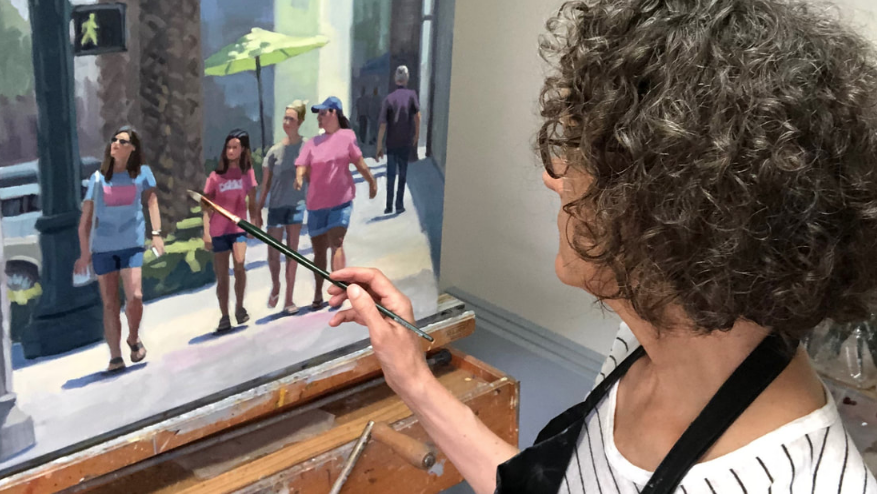Art studio hazards
Updated 4/21/21
Suffering for art
Being an oil painter used to be pretty hazardous work, what with toxic pigments like vermilion, lead white, and chrome yellow, as well as toxic solvents like turpentine. Things have improved a lot since then, but it pays to understand the risks and reduce them as much as possible. Also, as I become more environmentally conscious, I have worked to reduce waste and reduce my use of products that harm the earth.
Medium and solvent safety: Gamsol and Solvent-Free Fluid
All mineral spirits give off toxic fumes, but Gamblin Gamsol is the least volatile and is not absorbed through the skin like some others. So that’s what I use as a solvent to thin paints and to clean brushes. Of course I could use water-soluble oil paints and eliminate solvents completely, but I tried them and I was not happy with the results.
To minimize my risk of breathing Gamsol fumes I keep it in a small metal container with a tight fitting lid. I keep the jar capped when I'm painting and only open it to clean brushes. I also have an exhaust fan that is built into the ceiling of my studio and I place the solvent between me and the fan, so that the fumes are lifted up and away from me.
Traditional painting mediums (which make paint spread more easily) are blends of toxic solvents with oils like sunflower oil and stand oil. Instead I use a non-toxic medium, Gamblin Solvent-Free Fluid.
My painting technique involves loose early layers followed by progressively more detail in where I want the eye to focus. In order to get paint to behave the way I want I thin this medium with a bit of Gamsol, which allows me to get the blending from one stroke to the next that gives me a soft painterly look.
Safer varnish and gesso
I varnish my paintings to bring out the darks and to protect them from dust and wear. As far as I know there are no non-toxic varnishes available for oil paintings. So I always make sure to varnish in a well-ventilated area and wear gloves. And I let my paintings dry in a spare room so that my family isn’t breathing in the fumes.
I sand all my canvases to a buttery smoothness before I paint on them. These pre-made canvases are coated with white gesso, a material that in itself is not toxic. But sanding it can produce particles that are hazardous to the lungs. To reduce my risk I do my sanding outside or in the garage and I always wear a mask.
Oil paint safety
A few of today's oil paints come with warning labels because their ingredients are toxic when ingested or breathed. The Cadmium Red and Cadmium Yellow that I use have such a label. It sounds scary, but as long as I don’t eat the paint or use it as an aerosol spray, my risk is very small. To be safe, I don’t have meals or snacks in my studio and I make sure to wash my hands after every painting session. A good rule of thumb for all pigments: don't eat paint!
If you want more detail information on studio safety, Gamblin Colors has an excellent in-depth guide on the topic on their website.
A greener art studio
In the past ten years I have become increasingly concerned about how items from my daily life are harming the environment, including items that I use in the studio. So I have made the following changes:
I replaced the paper towels I used to wipe my paintbrush with cut-up old t-shirts. I used to use 6-10 paper towels a day and now I use 5 rags a week. Sending T-shirts and towels to the landfill is still not great environmentally, but since they would have been thrown away anyway, I consider it a partial win.
I switched to biodegradable bags to hold my painting waste. Plastic bags in the landfill break down into micro particles that end up in the water and throughout the food chain.
I use biodegradable gloves instead of disposable latex gloves to protect my hands
I buy 100% recycled printer paper. You know what they say; you're not recycling until you buy recycled!
Your turn: what are you doing to reduce toxins and pollutants in your home and work areas?


